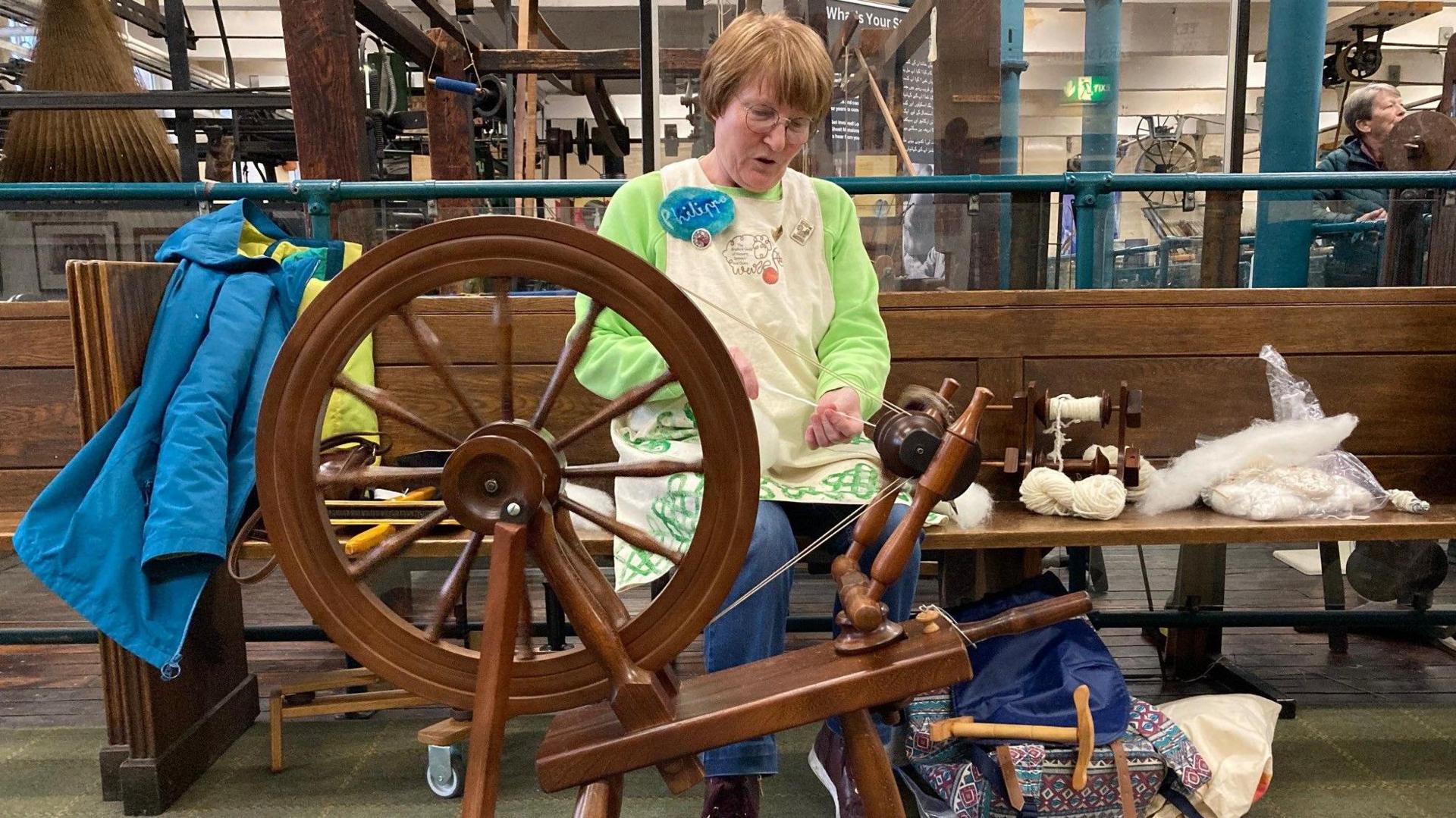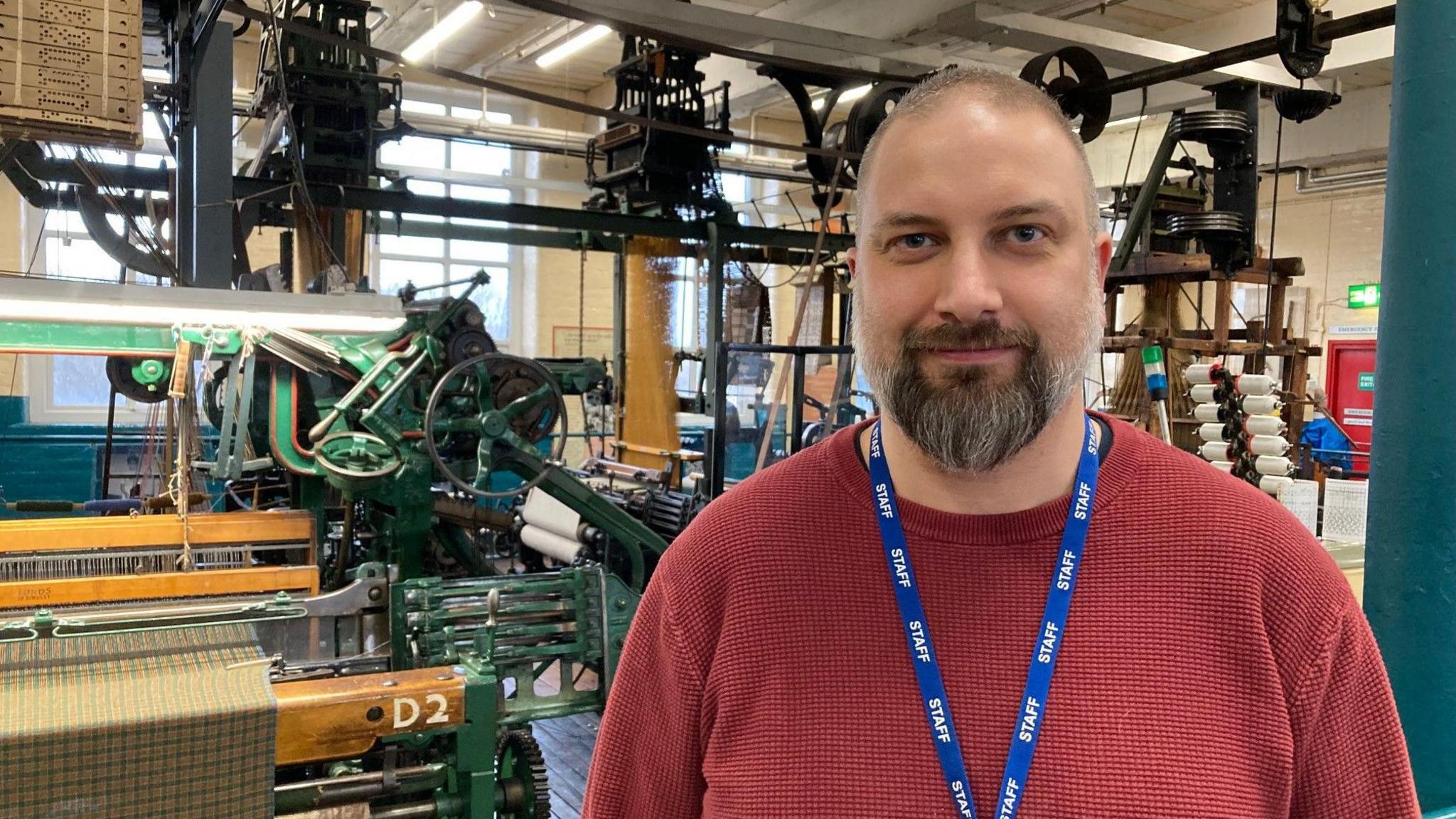Festival celebrates patron saint of wool-combers

Philippa Pemberton will be working with wool on a replica spinning wheel
- Published
The life of the patron saint of wool-combers is being celebrated in Bradford reflecting the city’s long association with the wool trade.
Bishop Blaise, an Armenian who lived in the late 3rd or early 4th Century, is believed to have been tortured using pins from a wool comb before being beheaded.
The St Blaise Wool Festival was a major event in the city until 1825. It was revived in 2017.
The modern festival is held annually at the Bradford Industrial Museum.
People went to Bishop Blaise for cures of both spiritual and bodily ailments, but he was killed for refusing to renounce his faith.
The manner of his death led to him becoming the patron saint of wool-combers.
Tony Carruthers, from Bradford Museums and Galleries, said he had been “celebrated and revered” in the city.
"Hundreds of years ago they used to have massive parades through the city centre and we're trying to bring a little bit of that back,” he said.
Bradford's reputation as a centre of mills and wool processing business resulted in the nickname Worstedopolis.
Worsted is a high-quality type of wool yarn and the fabric made from it.

Tony Carruthers said the festival celebrated Bradford's links with the wool trade
A procession would be held in the city every seven years on 3 February, the bishop’s saint day.
Bradford Woolly Heritage Community Interest Company runs the revived event.
Philippa Pemberton, from the Bradford Guild of Spinners, Weavers and Dyers, will be working with wool on a replica spinning wheel during the festival.
“There will probably be several people there spinning and maybe some people weaving,” she said.
"We're all volunteers, we do this as a hobby because we enjoy it.”
She said they also enjoyed supporting the museum during events such as the Wool Festival.
The event begins at the museum at 11:00 GMT on Sunday.